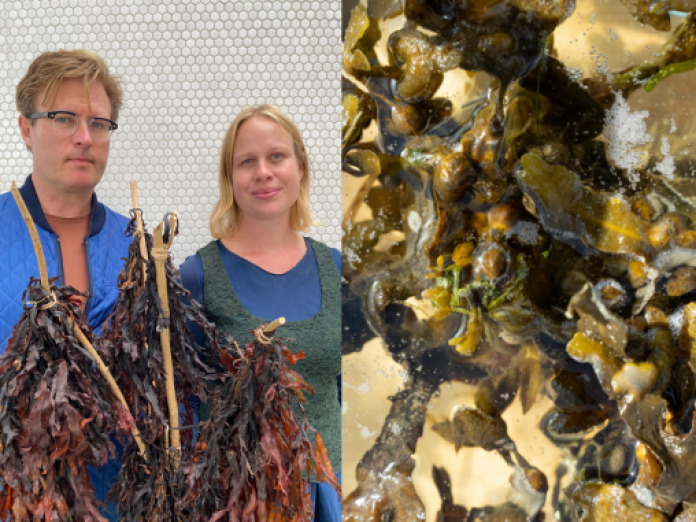Meet last year's participants: I think seaweed
Interview with Maj Horn and Henrik Majlund Toft from I think seaweed
I think seaweed! At this year's Kulturhavn Festival, several guests took part in a conversation workshop, where they curiously investigated the sea's special plants. The workshop was held by visual artist Maj Horn and writer and curator Henrik Majlund Toft, who here explains why it makes sense to delve into the wonderful world of seaweed:
In Denmark, we are surrounded by water and there is so much seaweed in it. There are almost 400 species of seaweed. And it's crazy that it's something we look at and can smell when we're at the beach, and many of us eat it in sushi and other food - but we don't actually know it.
We wanted to stimulate curiosity and open up a world that is right in front of our feet. Seaweed has been a large part of our culture and is included as a chemical ingredient in food, but we do not know it in the form that it comes in naturally.
We would like to have more knowledge about it, without it having to be as a consumer and because seaweed tastes nice, but because seaweed has a value in itself.
At the workshop, we look specifically at what kind of seaweed is in Nordhavn and then move on to some more abstract topics.
Right now there are so many eco-crises we have to deal with. And we both believe that we will have to re-think our relationship with landscapes and other species. And here we focus on seaweed as one of the other species. We need a new view of how we are as people in the world.
Tang is interesting because we can use it in many contexts. Tang has a different way of being in the world than us humans, so perhaps we can use it to perspective our way of understanding the world. Maybe we can learn something from seaweed.
What can be learned from seaweed? (May) In Denmark we are surrounded by water and there is so much seaweed in it. There are almost 400 species of seaweed. And it's crazy that it's something we look at and can smell when we're on the beach, and many of us eat it in sushi and other food - but we don't actually know it. How can we investigate something that we know and at the same time do not know at all.
What does it mean that we know seaweed and its properties? What does this mean in terms of getting to know landscapes and other species? Get more knowledge about it without it having to be as a consumer, because seaweed tastes nice, but because seaweed has a value in itself.
(May) What can happen when a writer and curator team up with a visual artist who creates temporary platforms for knowledge sharing. In our own conversations, we ask a lot more questions than we come up with answers. We were interested in finding out how we can involve others in these conversations. How far can we get in the conversation in two hours? Can we ask new questions?
We look specifically at what kind of seaweed is in Nordhavn and then move on to some more abstract topics.
(Henrik) We wanted to stimulate curiosity and open up a world that is right in front of our feet and create an interest in seaweed. Seaweed has been a large part of our culture and is included as a chemical ingredient in food, but we do not know it in the form in which it occurs naturally.
It has also been part of an artistic process, because we work with some overall seaweed projects and the knowledge that is created at workshops is included as part of our research.
(May) Right now there are so many eco-crises we have to deal with. And we both believe that we will have to re-think our relationship with landscapes and other species. And here we focus on seaweed as one of the other species. We need a new view of how we are as people in the world.
